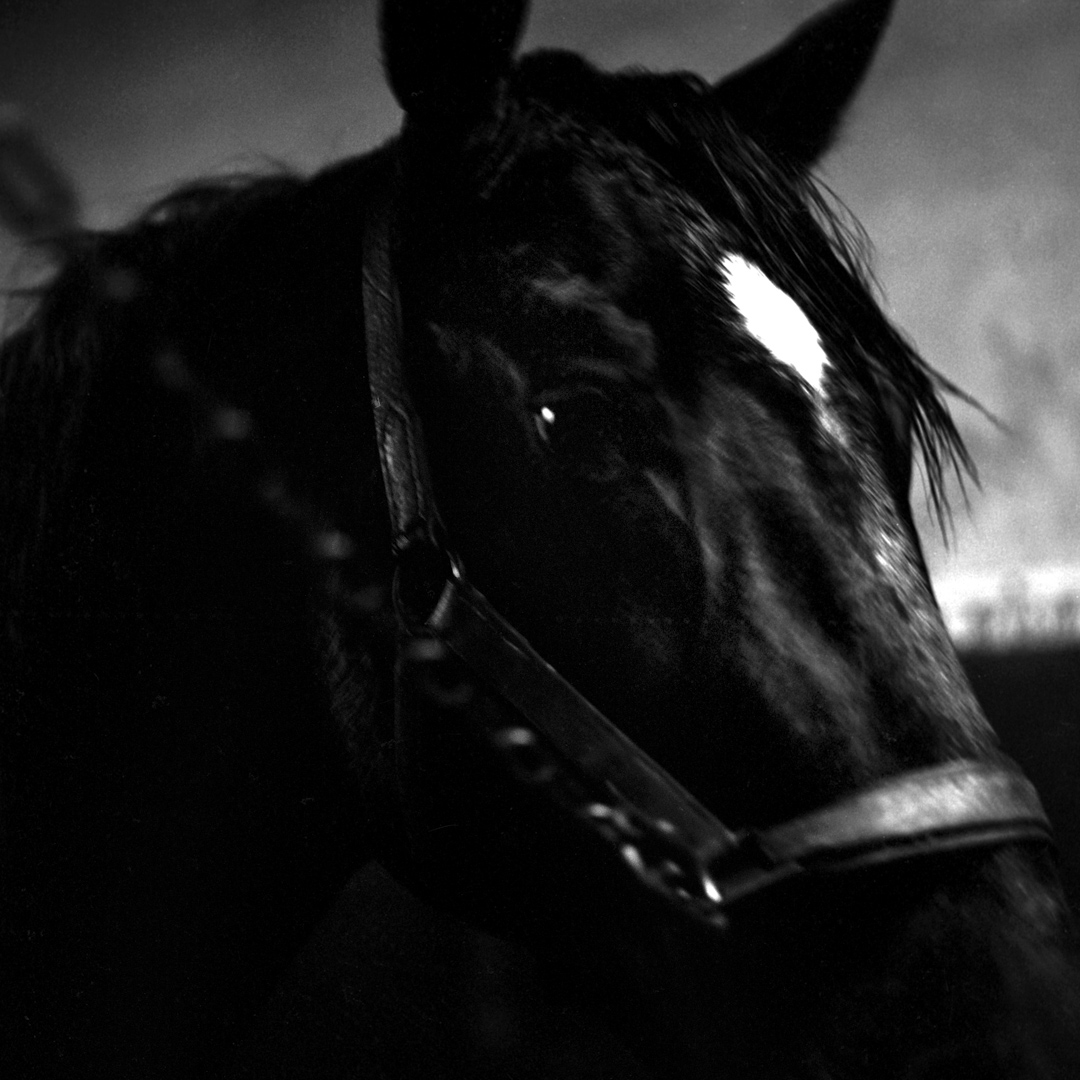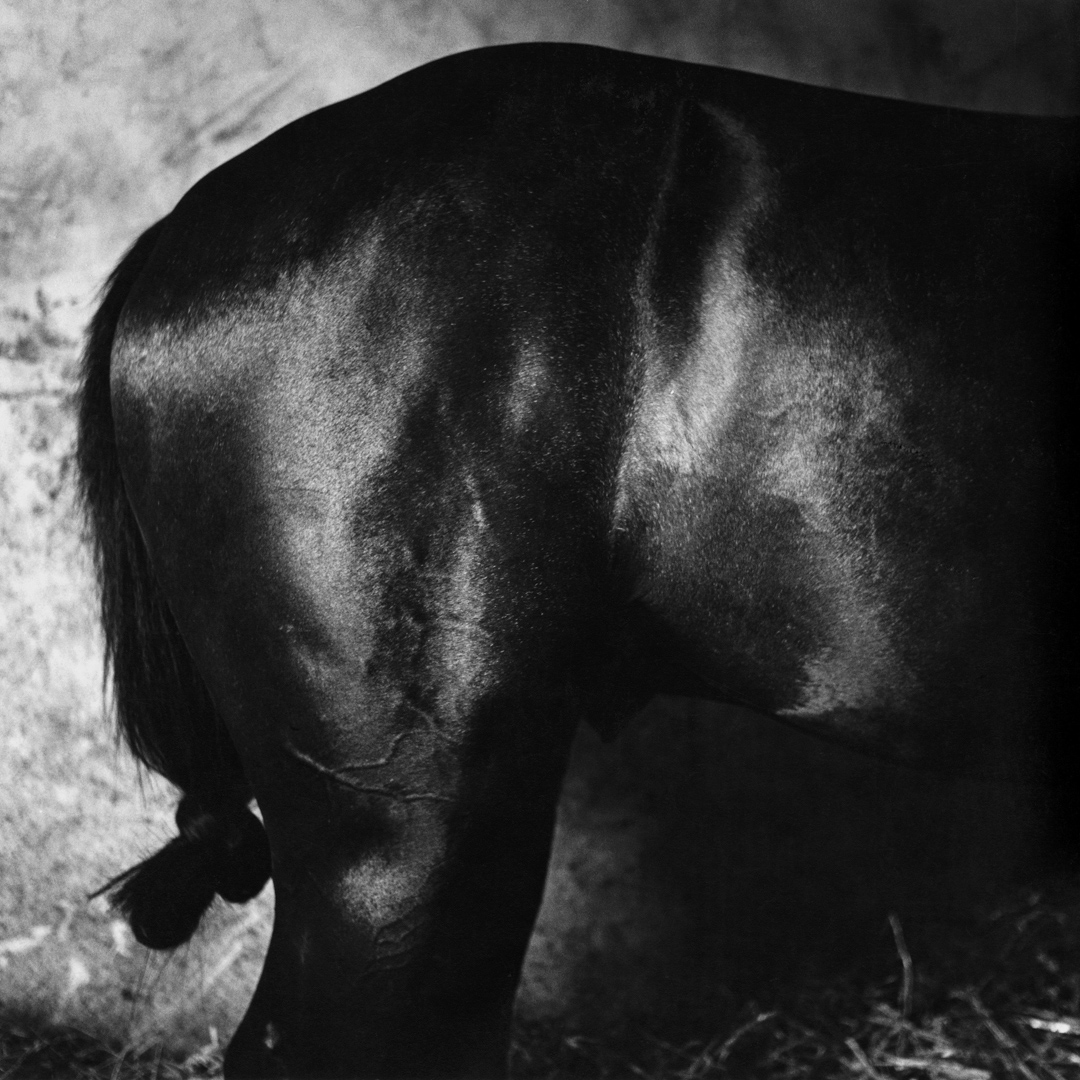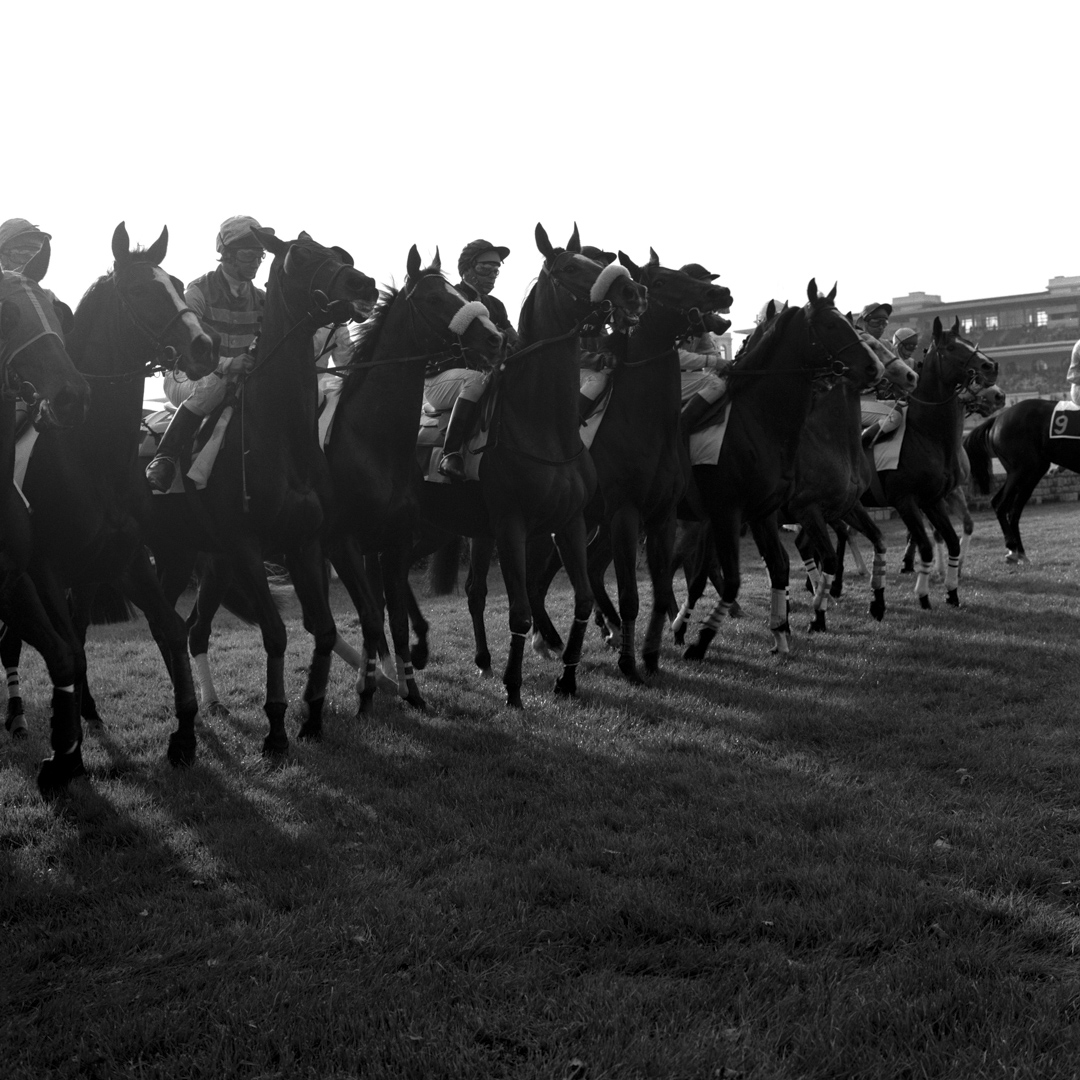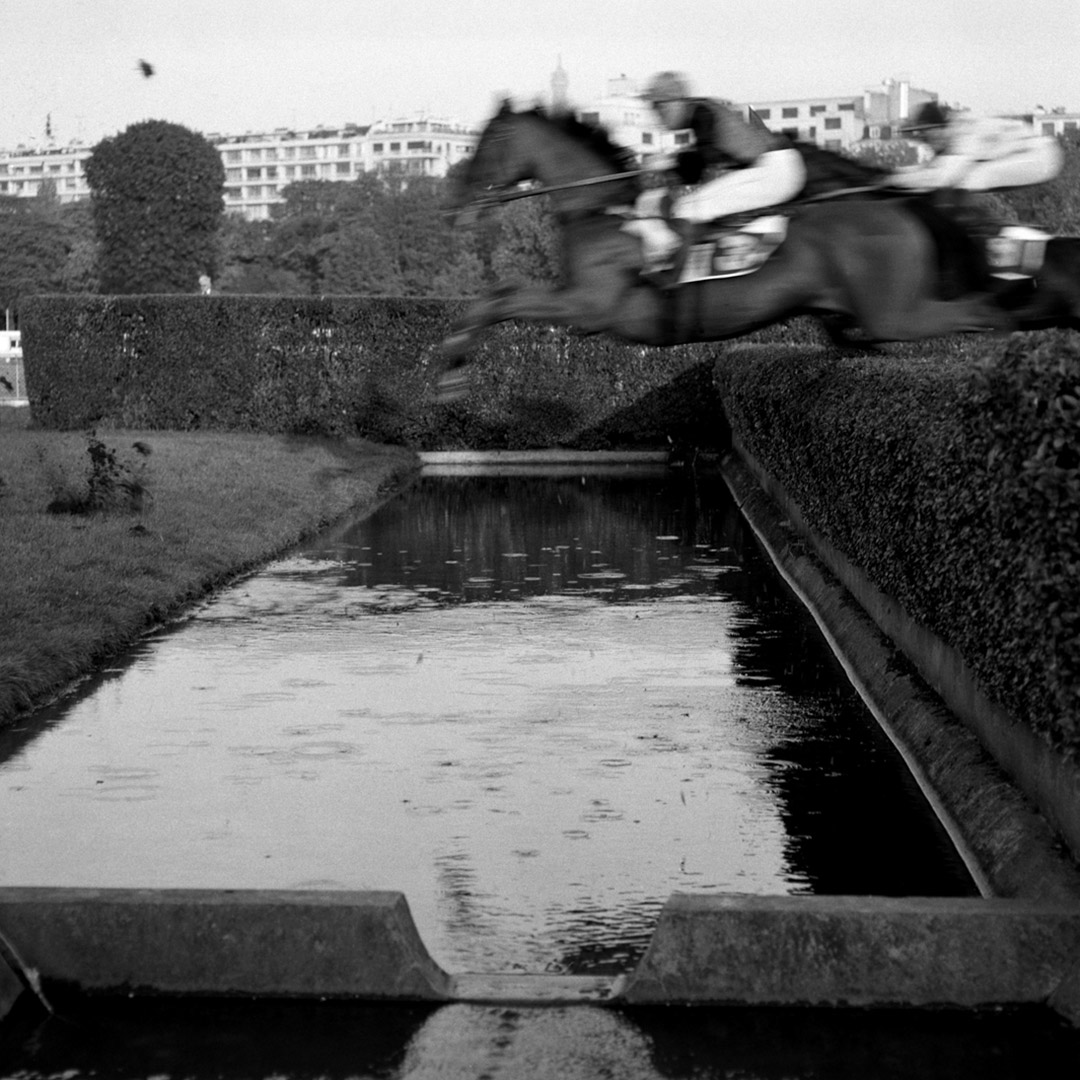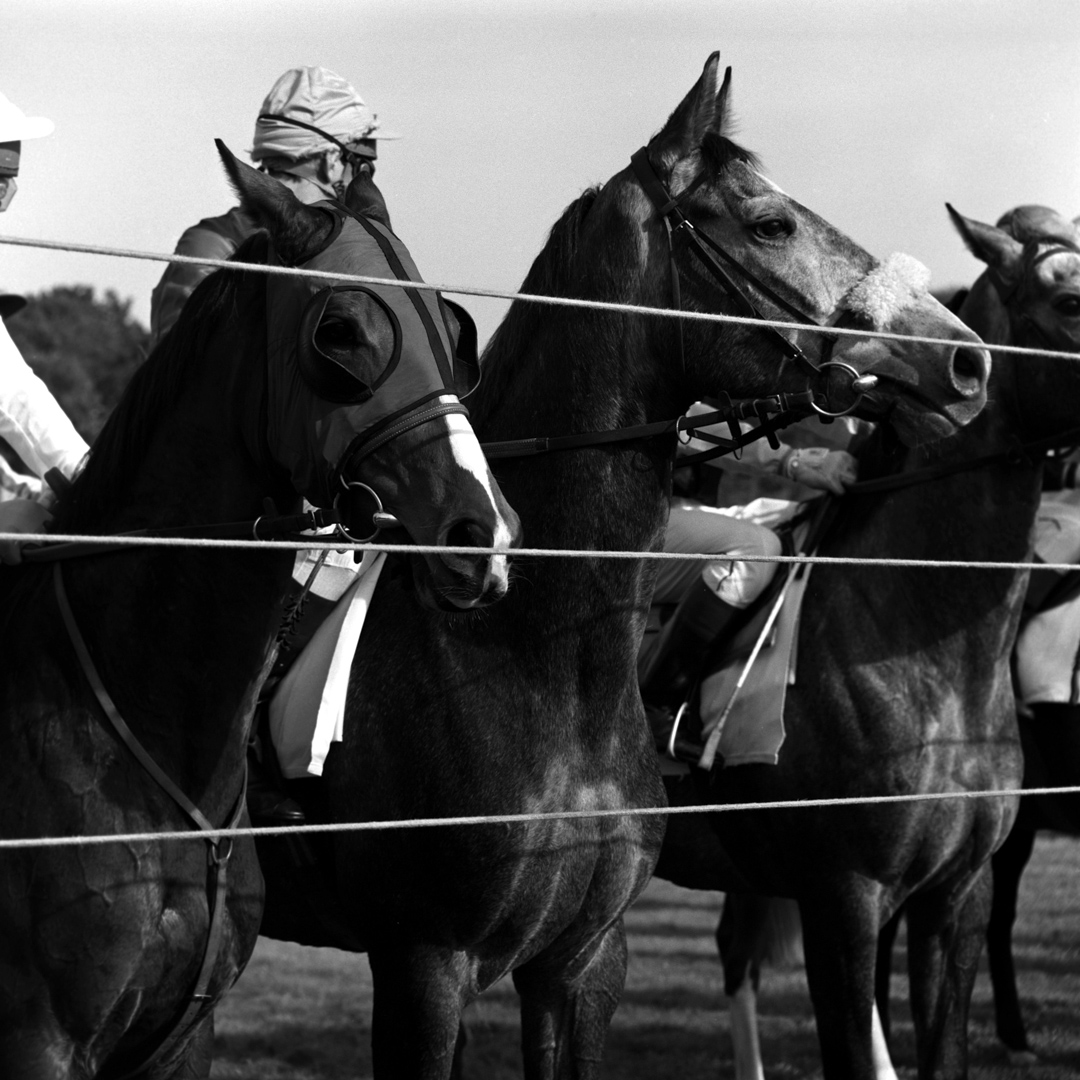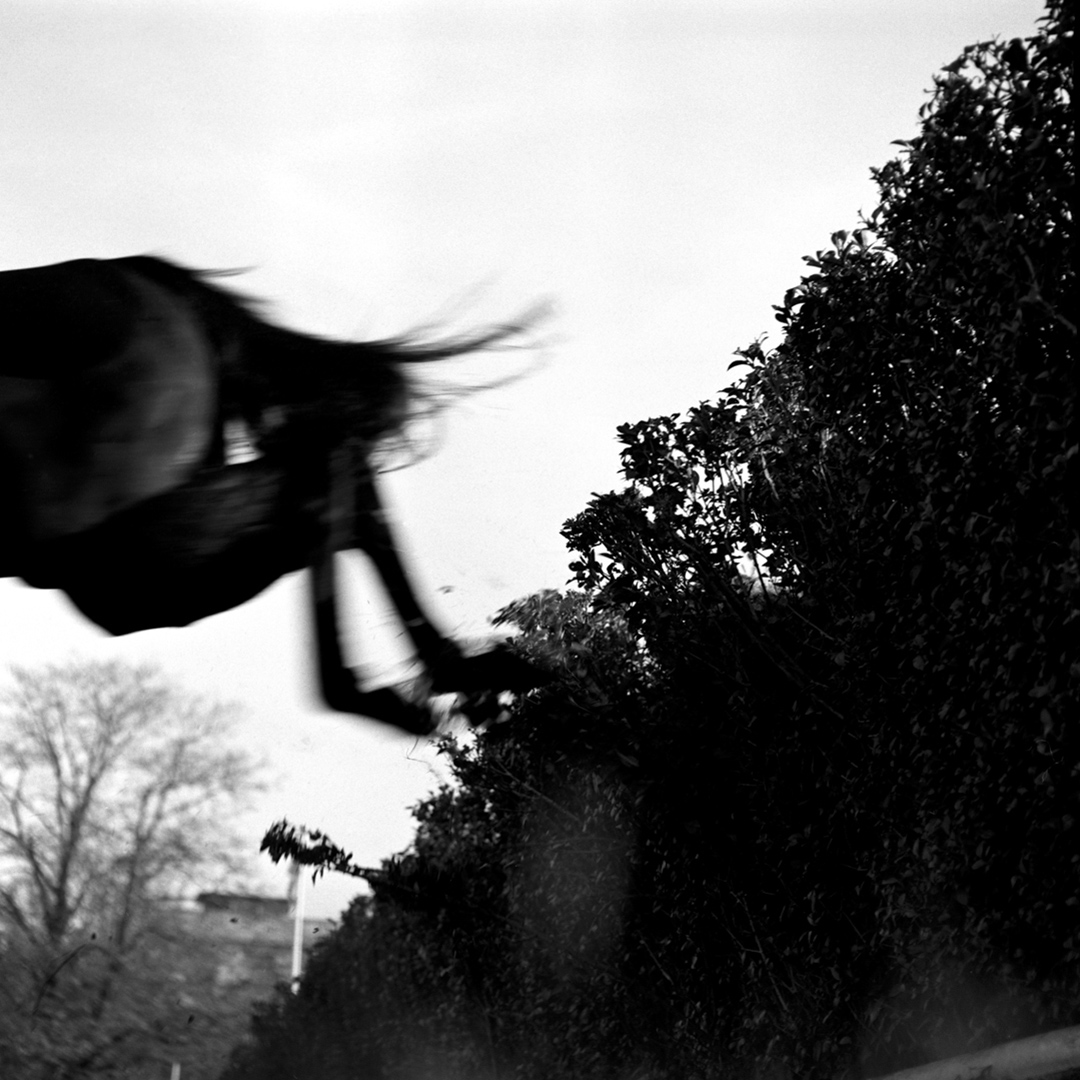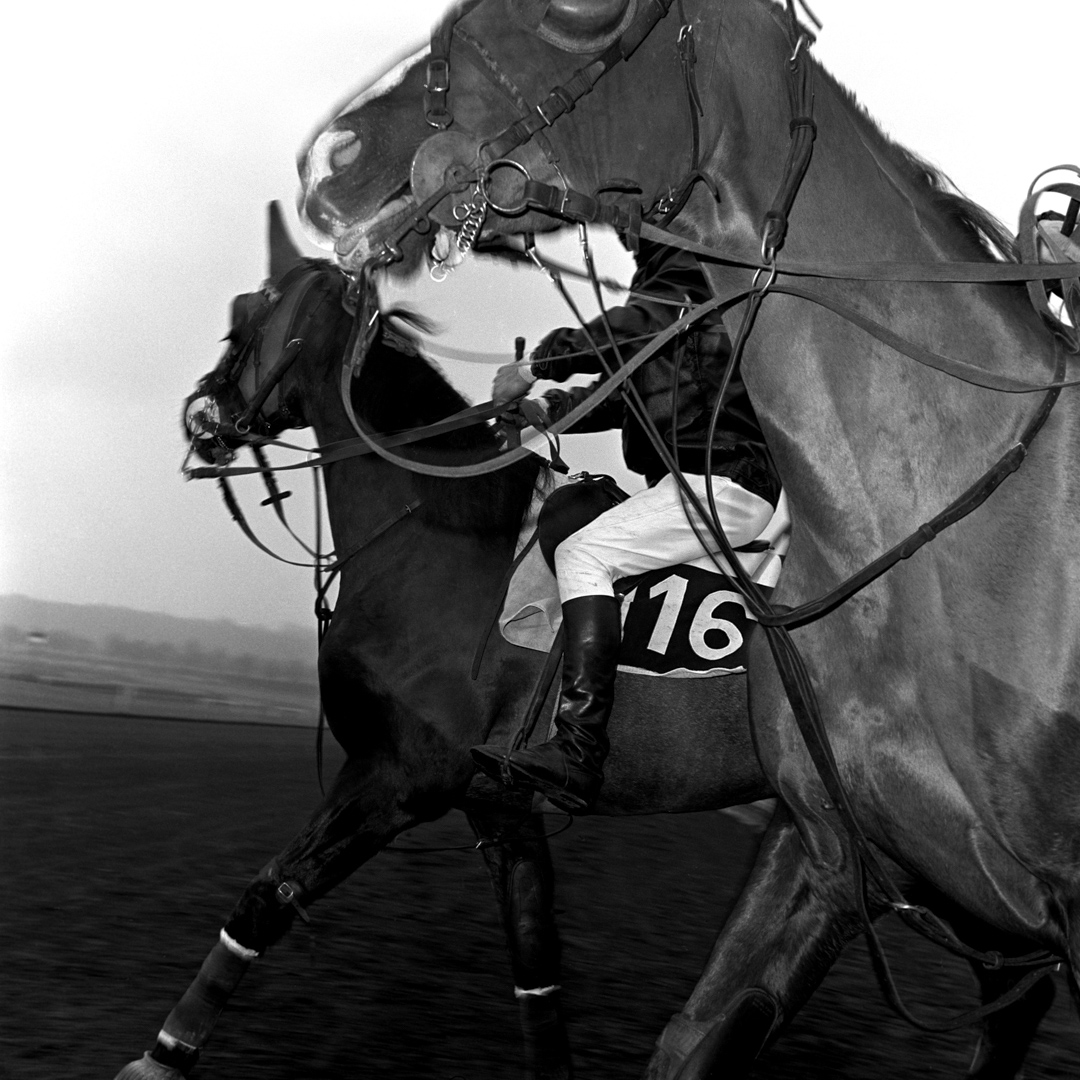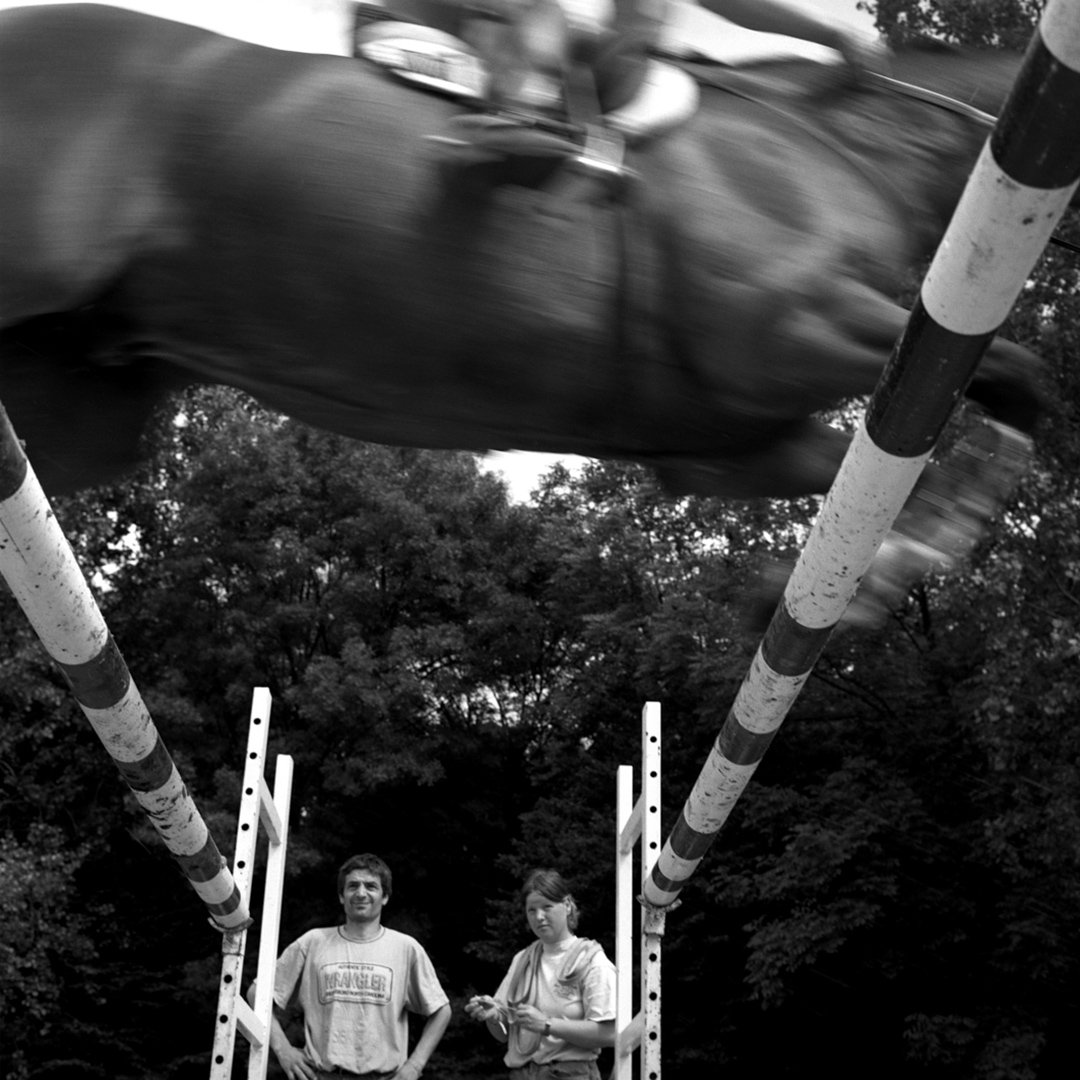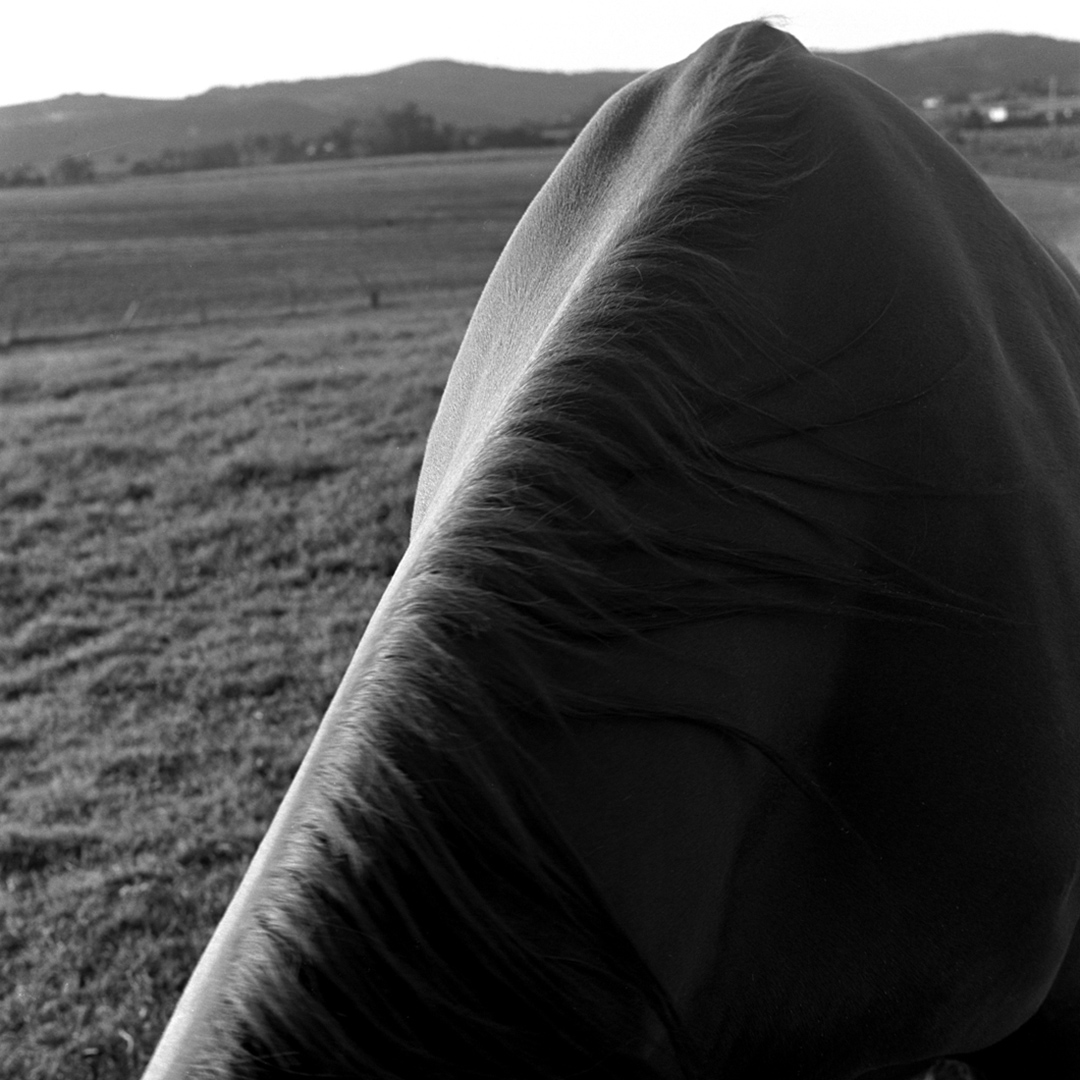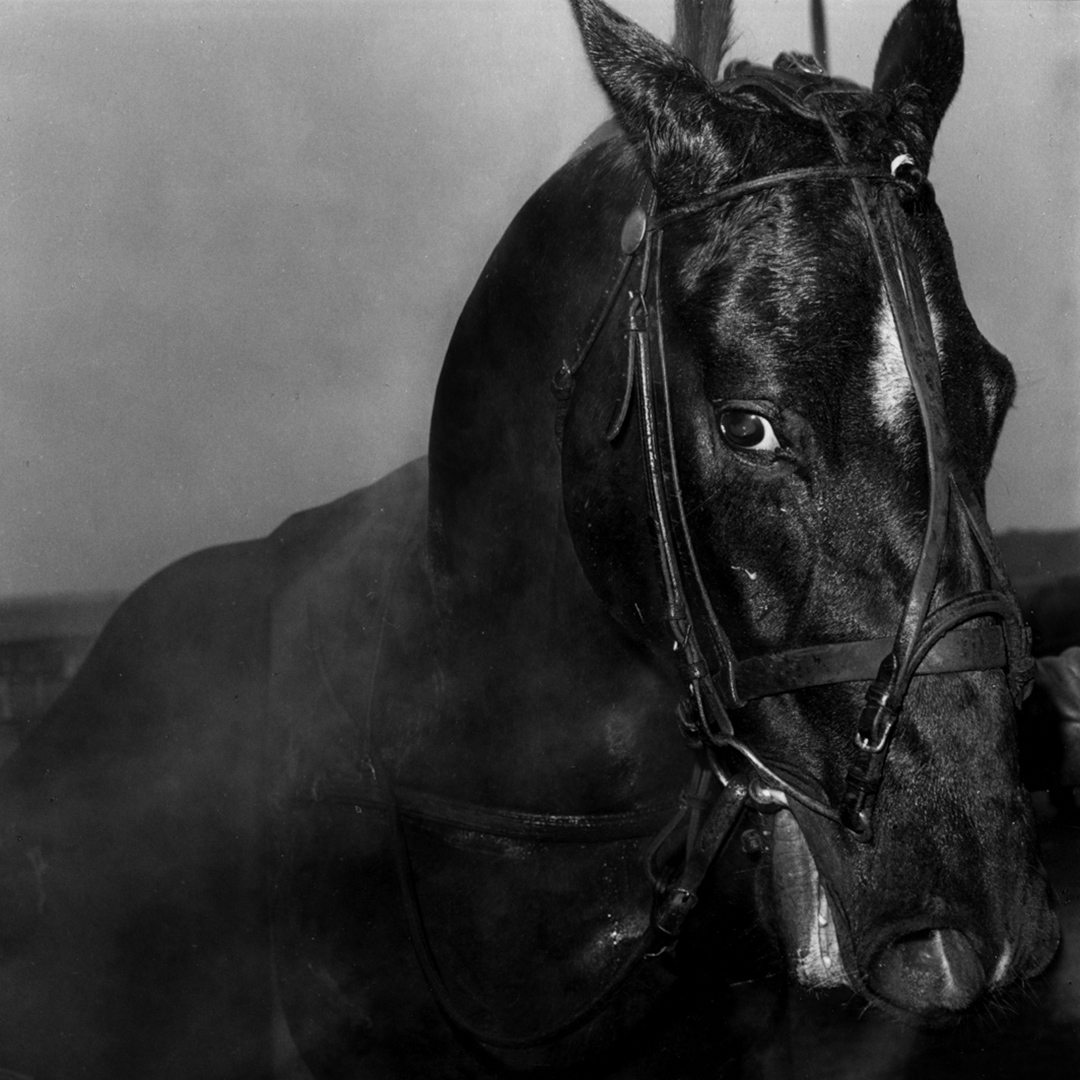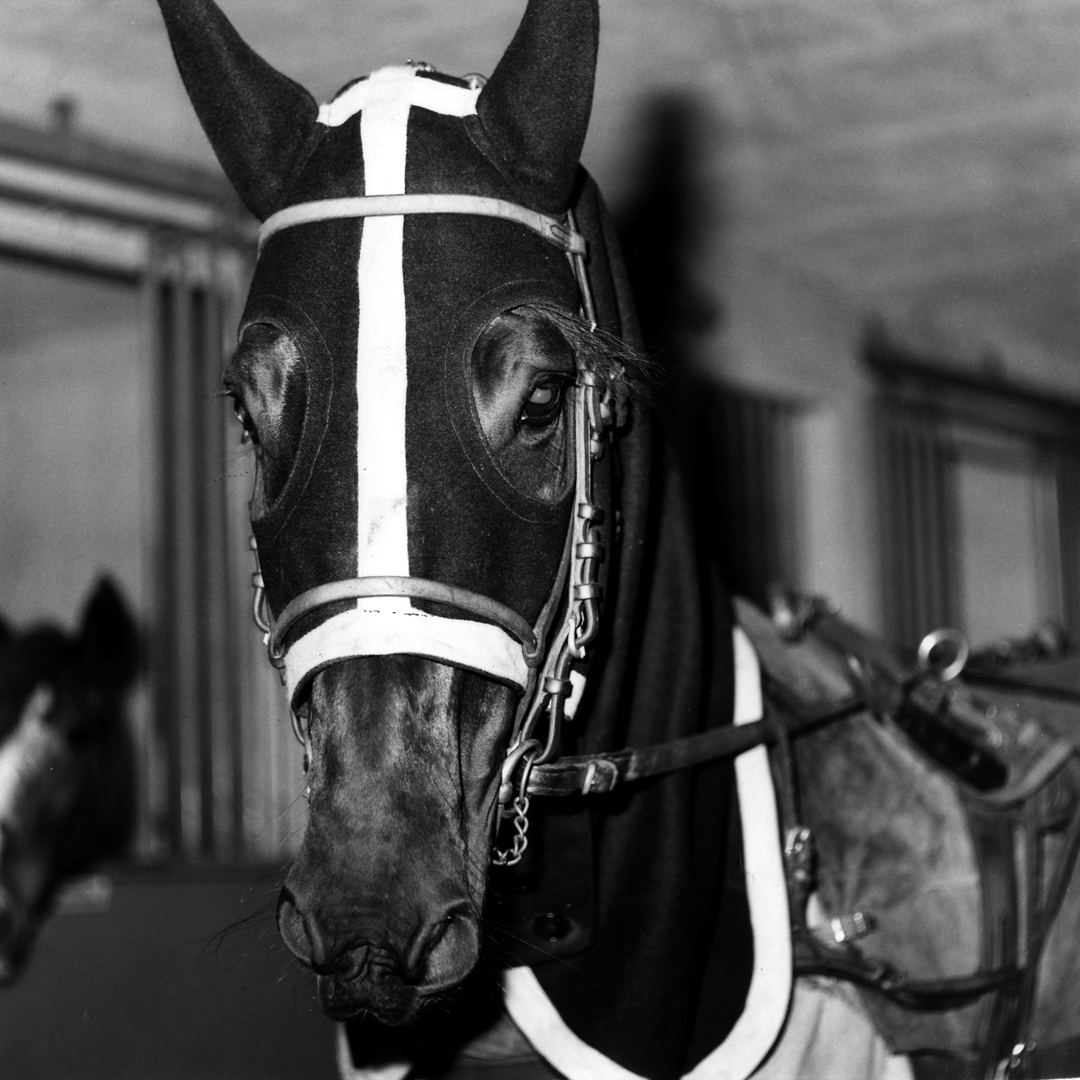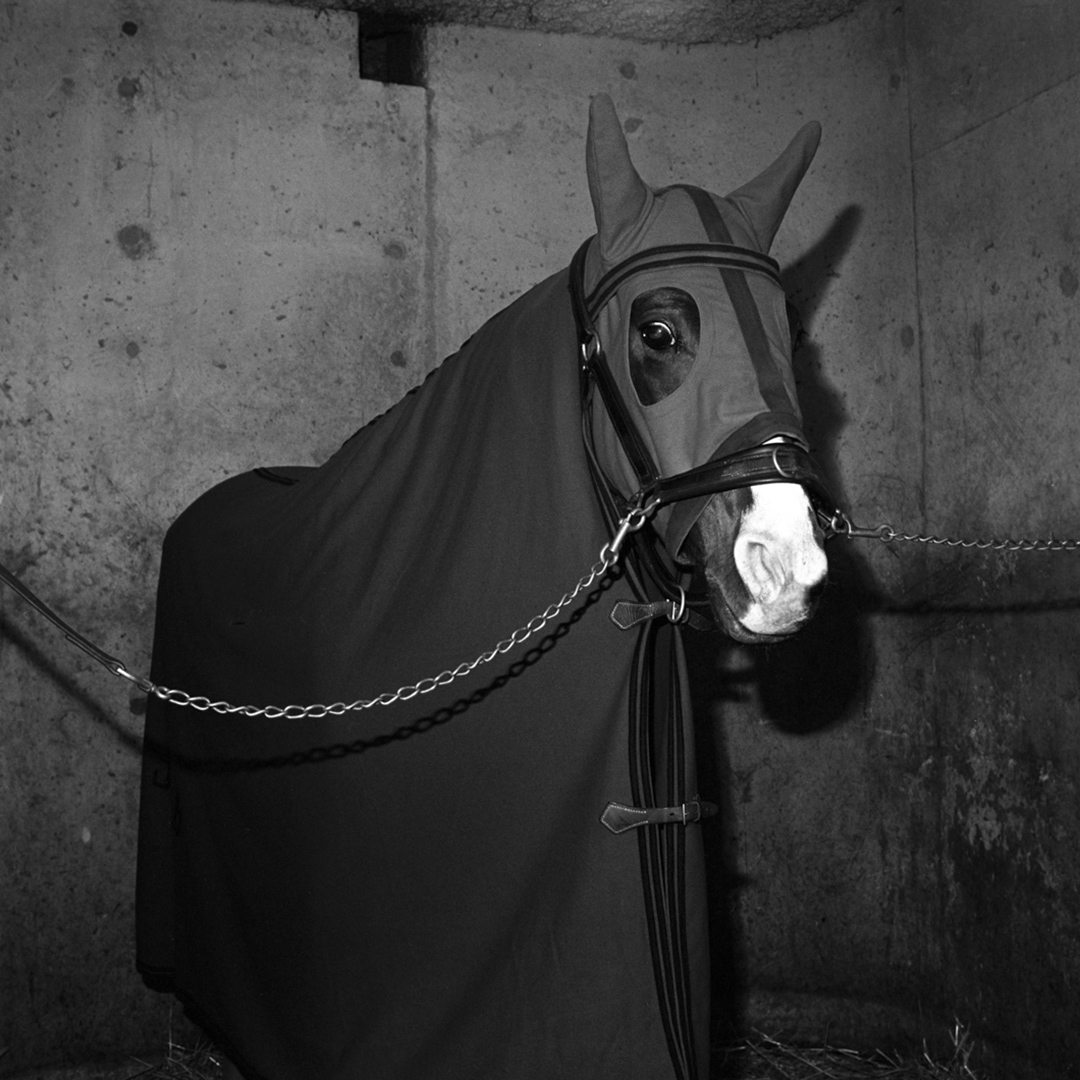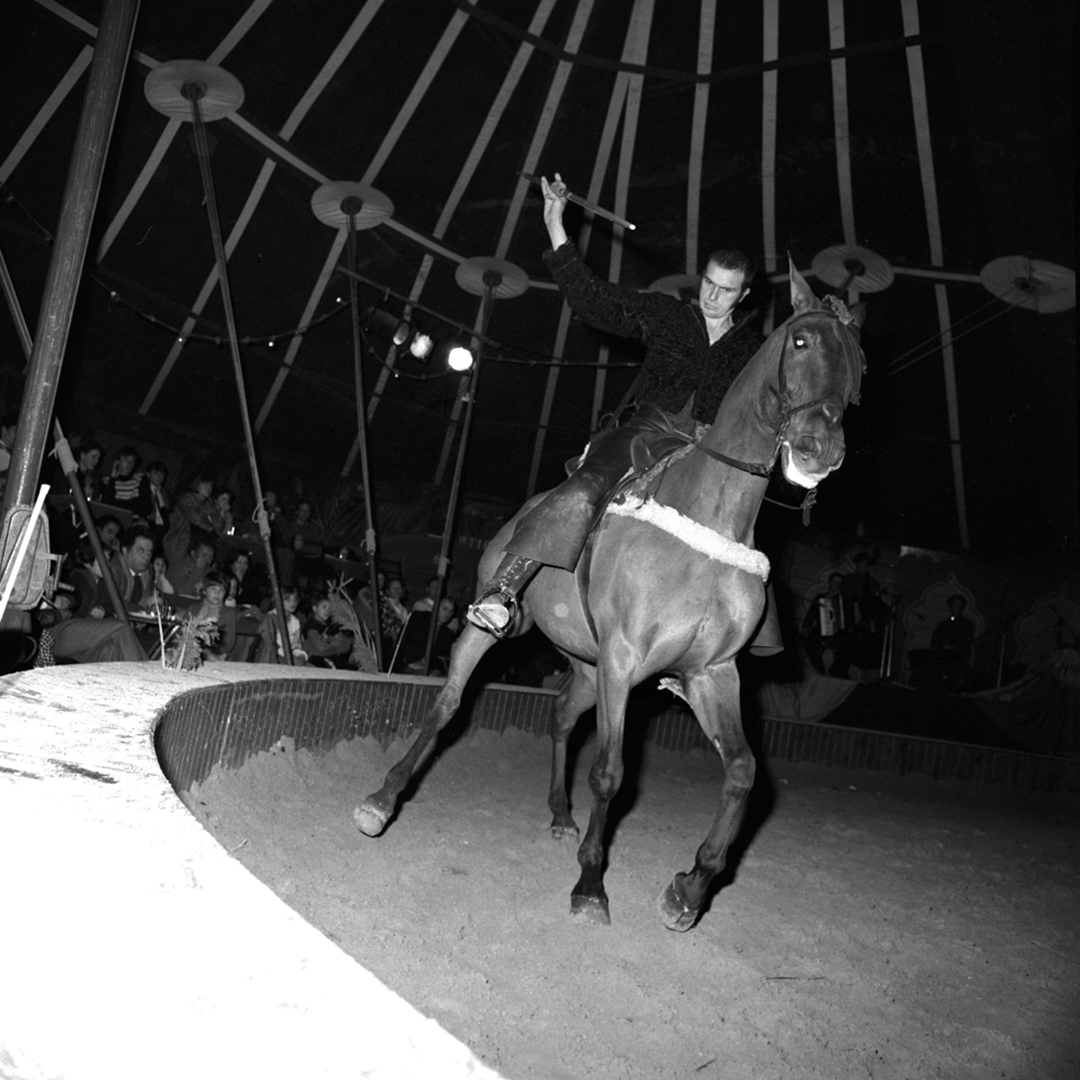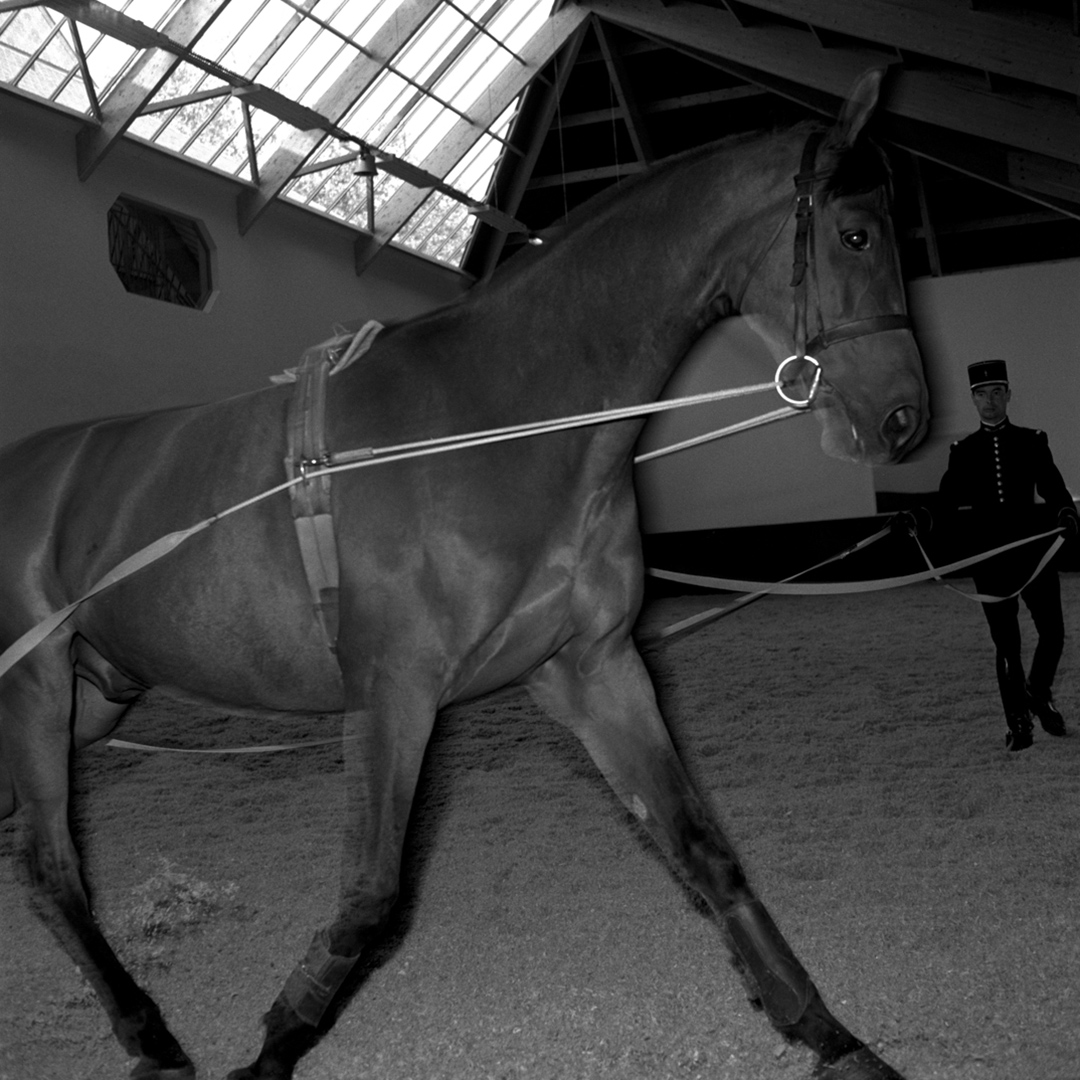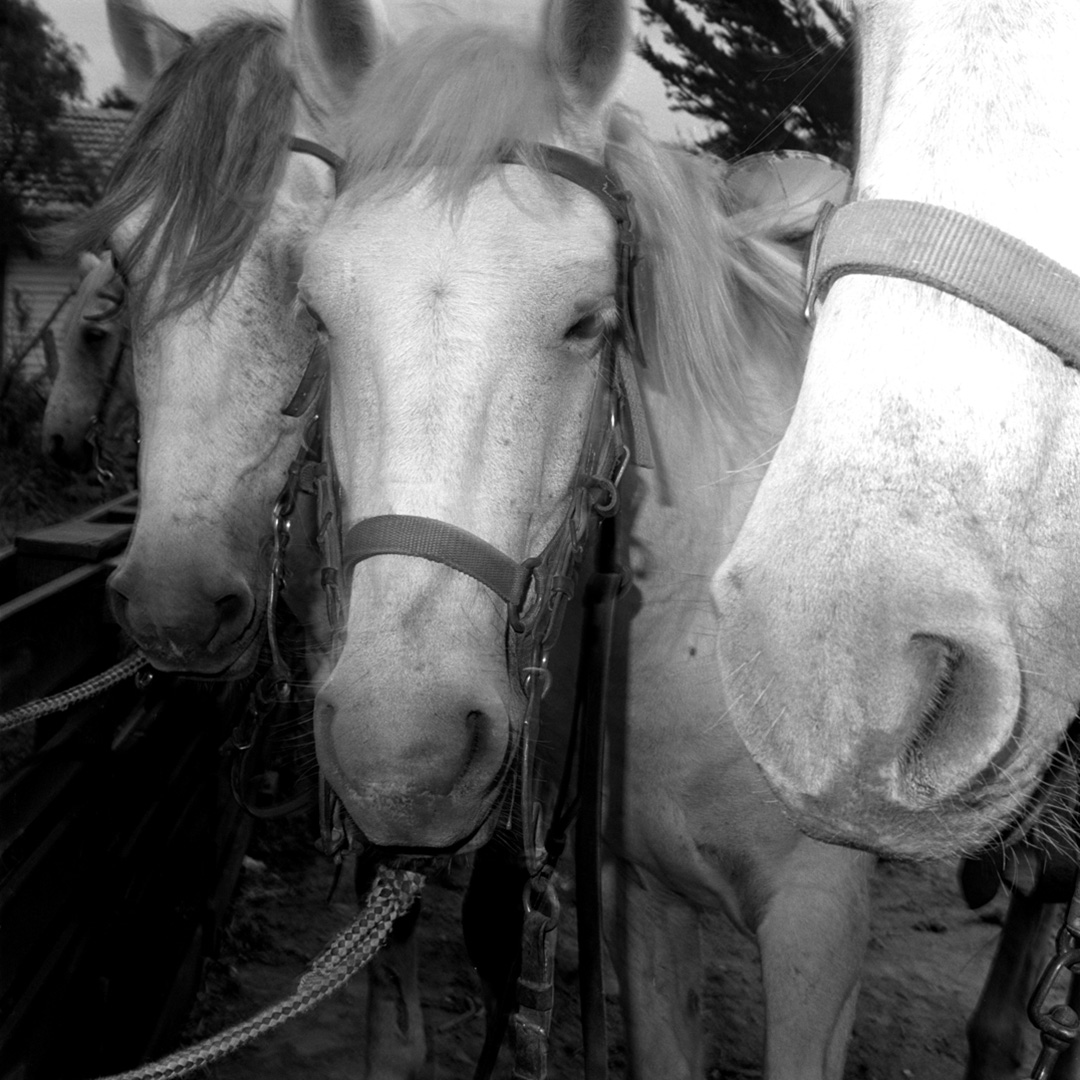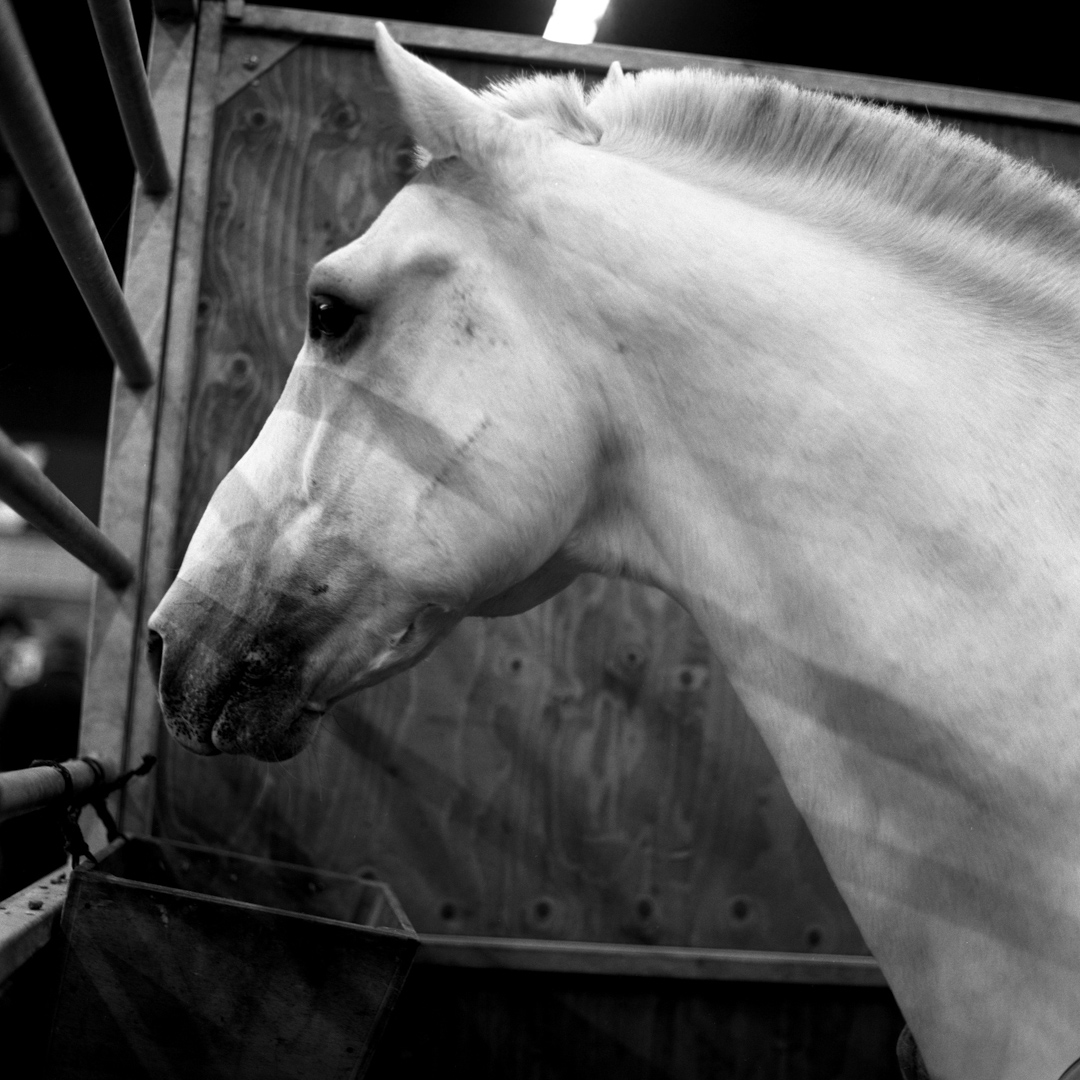Horses, 1985
Through Black and White pictures and square format, the envy of framing and creating movement inside the square, she manages to balance the natural rigidity. Her horses, like any photographic “object” become the pretext. In the reality of the racecourses, of stalls and pastures, of riding schools or stables, they lends themselves to photography in all games. At portrait first, with nothing more than a psychological approach and a lot of affection. Their attention moves from sadness to a haughty nobility. The pupil dropped a hint of questioning in the sensuality of a move, or pierced the hood with the round of an eye which told about his determination.
Moved and moving portraits, sometimes shocking, casting a tear on a lit hair near the delicacy of a palpitating nostrils, heavy of loneliness too, worried about a close look or exhausted after the effort. Real portraits occupy the frame, allow themselves to be settled with some violence by the square, isolating the details of a face which became tension between a form and the meeting of two expressions.
But this is not enough. The portrait is watched by formalism.
Concerning the landscape, with black or white manes, shaken by the wind, fleecy material held in the hills, sometimes transformed into foam, marry the vanishing of the meadow to believe that the coat became organized shingles.
Horizons of thin muscles, rivers of swollen veins in the smoothness of the coat, the horses become organization of sensual materials because the light caresses differently, depending on the angles and distances chosen. Then the photographer practices some stills for alive horses. She Cuts into ridges transformed into massive and elegant sculptures, dark, sometimes surreal because of their transparency. Agnes Bonnot focuses on the perfection of forms given by nature and polished by the brush. Sometimes she lets herself go, because of forms, to frame elements of the riding stable, leather sculptures in the space where you turn, to a somewhat medieval vision, simply amazed by the beauty of an object or a chest. (…)
Christian Caujolle
